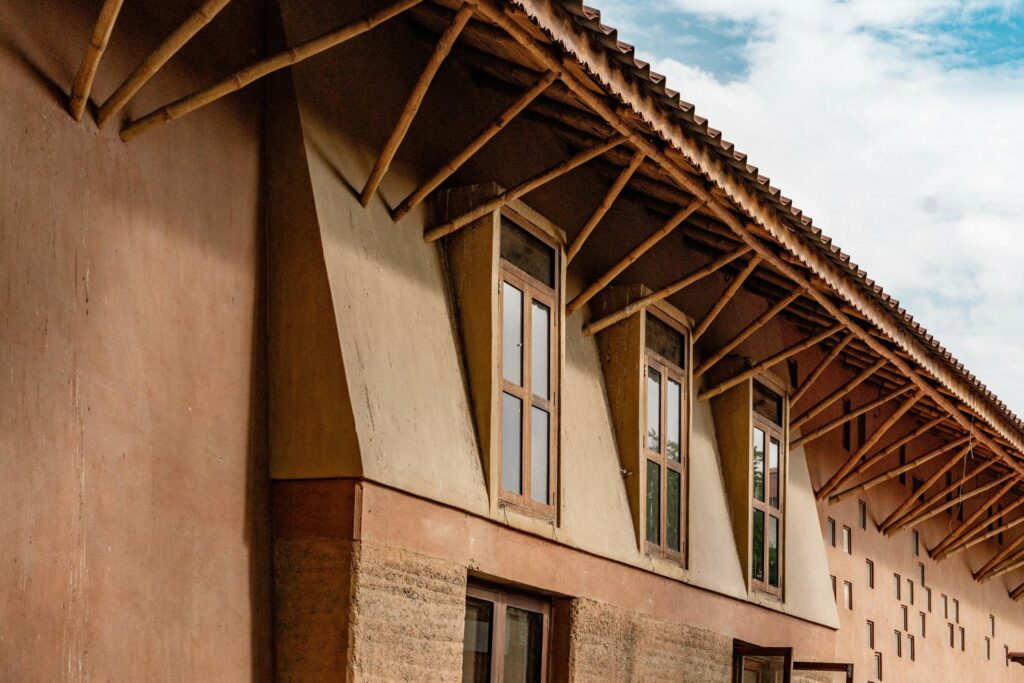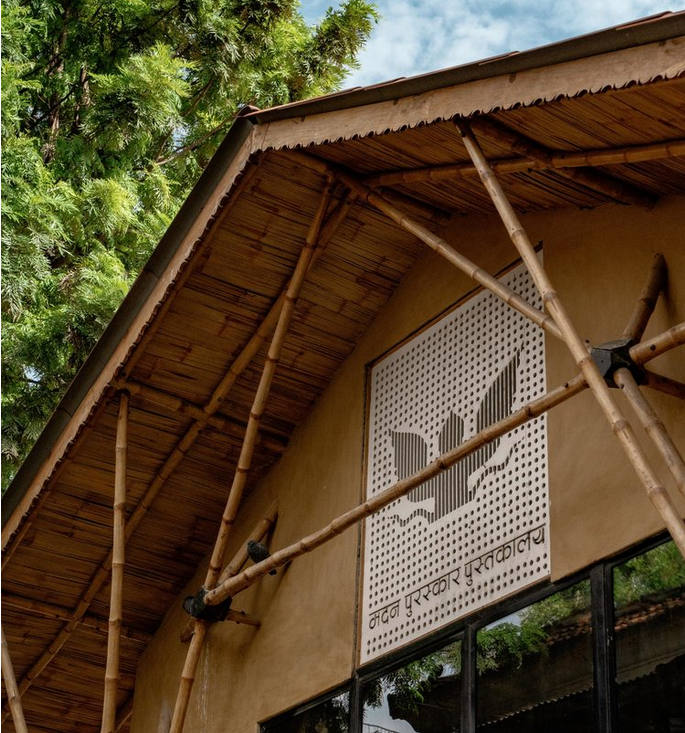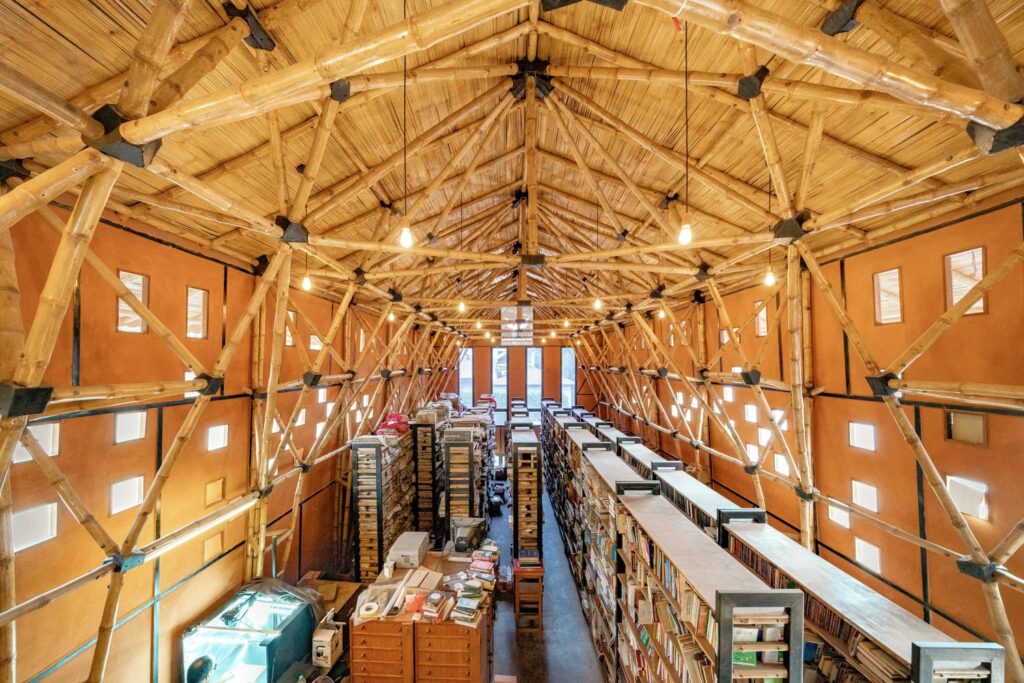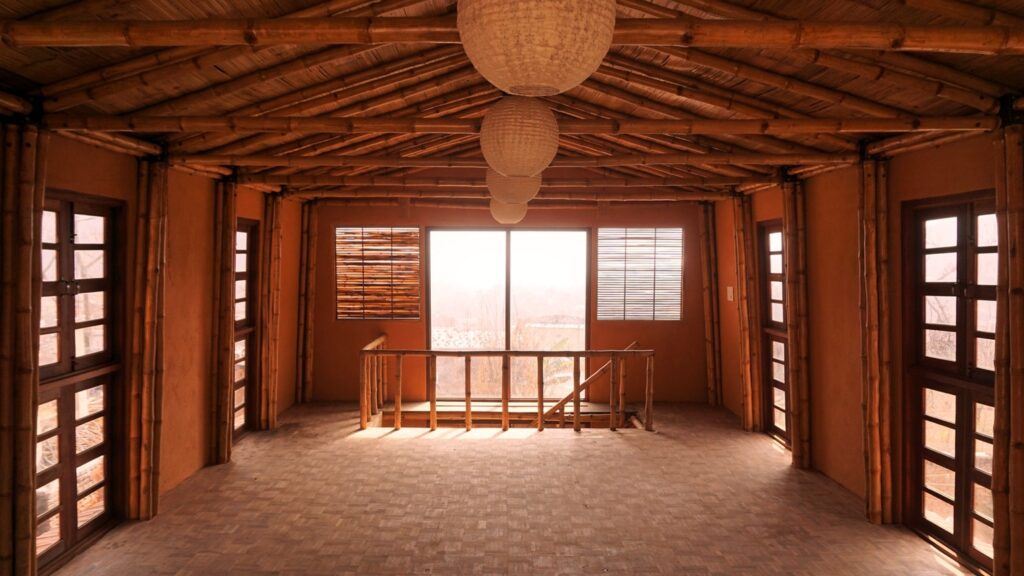The 2015 quake that saw the collapse of predominantly brick, mud, and mortar buildings in Nepal, fed the public perception that concrete structures are more durable. But civil engineers and architects say technologies like rammed earth would be environmentally more sustainable and earthquake-resilient. Nepal’s domestic cement production more than tripled from 3 million tons to 10 million tons in the six years since the earthquake.
 Rammed earth construction uses locally-sourced soil often combined with gravel and reinforced with steel bars and limited concrete. It produces less emissions than brick kilns or cement manufacture.
Rammed earth construction uses locally-sourced soil often combined with gravel and reinforced with steel bars and limited concrete. It produces less emissions than brick kilns or cement manufacture.
Narayan Acharya, the director of Sustainable Future Nepal, built his own house in Kathmandu with locally-sourced materials and rammed earth. He has since built ten more structures in Kathmandu Valley.
 “It is warm in the winter and cool for the monsoon; we should promote that all over Nepal,” says Acharya, adding that rammed earth structures are both sustainable, comfortable and retain the traditional Newa style. The structures are resistant to monsoon weather. He also has a built-in water recycling system and a biogas tank.
“It is warm in the winter and cool for the monsoon; we should promote that all over Nepal,” says Acharya, adding that rammed earth structures are both sustainable, comfortable and retain the traditional Newa style. The structures are resistant to monsoon weather. He also has a built-in water recycling system and a biogas tank.
 Rammed earth projects have been particularly successful in Nepal’s rural areas. In 2020, the Bayalpata Hospitalwas built with rammed earth technology and won international design awards. There are not as many rammed earth structures in Kathmandu proper however.
Rammed earth projects have been particularly successful in Nepal’s rural areas. In 2020, the Bayalpata Hospitalwas built with rammed earth technology and won international design awards. There are not as many rammed earth structures in Kathmandu proper however.
One reason for the lack of rammed earth structures in Kathmandu is the misconception that mud mortar buildings are weaker. In 2015, the majority of fallen buildings in the earthquake were brick and mud mortar. But those fallen buildings were not built with rammed earth techniques, and many violated building codes.
 “They do not believe mud is strong enough,” says Acharya about rammed earth structures. “It is important to overcome that misconception.”
“They do not believe mud is strong enough,” says Acharya about rammed earth structures. “It is important to overcome that misconception.”
Experts warn that public confidence in concrete construction is misleading. Even a slightly longer or more intense earthquake could have also brought down concrete structures in 2015.
Current building codes limit rammed earth structures to two and a half stories, making them less popular in a dense, city environment that builds upwards even though rammed earth buildings can go up to three stories.
 Acharya says his rammed earth structures did not crack in the last earthquake. Earth buildings are used internationally and historically, with structures found in Chile, India, Nepal, and Iran.
Acharya says his rammed earth structures did not crack in the last earthquake. Earth buildings are used internationally and historically, with structures found in Chile, India, Nepal, and Iran.
Rammed earth structures use reinforced ring beams, steel bars, and up to 10% concrete that interlock the earth walls. The concrete and rebar is providing the same support, but with far far less concrete and using local materials.
Rammed earth is not just for the short term… it is built to last. The materials are unlikely to contribute to future waste and environmental impact because when demolished, the material can be reused.
You can read the original article at www.nepalitimes.com
